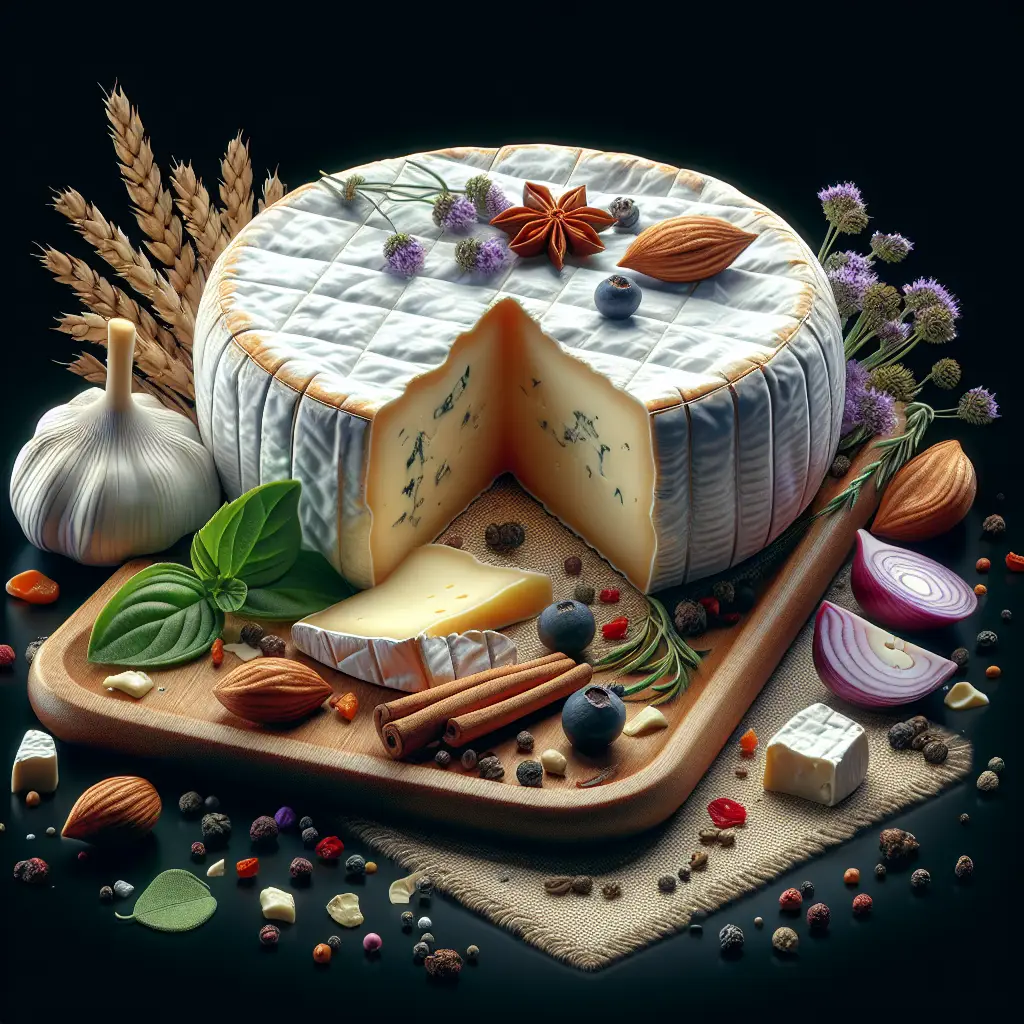The Origins of Camembert de Normandie
Camembert cheese originated in the small Norman village of Camembert in the 18th century. Farmers in the region were already making soft cheeses with local cows’ milk, but the recipe took a famous turn during the French Revolution. Legend has it that a travelling priest taught Marie Harel, a local farmer, the secret to perfecting a cheese that would become known as Camembert.
Camembert de Normandie quickly earned a name for itself due to its unique flavour and soft, creamy texture. What sets it apart is the raw milk used in its production and the fact that it’s crafted by hand. Protected by an AOC (Appellation d’Origine Contrôlée) status, Camembert de Normandie must follow strict traditional methods and be produced only in the Normandy region.
You can explore and even buy authentic Camembert de Normandie AOC from our website to experience its heritage yourself.
What Does Camembert Taste Like?
The moment you cut into a round of Camembert, you’ll notice its luscious interior start to ooze out slightly, especially at room temperature. It has a strong aroma, often described as earthy or mushroomy, which comes from the natural mould on the rind, called Penicillium camemberti.
Flavour-wise, Camembert offers a creamy, rich taste with hints of grass and hazelnuts. The flavour gets bolder and more complex the longer it’s aged. If it’s young, it has a delicate and milky character, while a more mature Camembert gives off stronger, more flavoursome notes that linger on the palate.
This makes it an ideal cheese for both beginners and long-time cheese lovers. It’s a cheese that’s easy to fall in love with, especially when paired with crusty bread, fresh apples or even a drizzle of honey.
Traditional Cheese Making in Normandy
What gives Camembert such strong character is the time and skill that goes into making it. Unlike mass-produced versions, traditional Camembert de Normandie must follow a careful process. This includes using unpasteurised cow’s milk and hand-ladling the curds into moulds no fewer than five times to remove excess whey while preserving the delicate structure.
The cheese is then salted and aged for a minimum of three weeks. Over this time, a white, bloomy rind forms naturally on the surface. Beneath that rind is the soft interior that becomes creamier as the cheese matures.
Normandy’s rich pastures, filled with lush grasses and wildflowers, play a key role in giving the milk used in Camembert its distinct flavour. Cows grazing on these healthy fields produce milk layered with depth and natural sweetness. Each bite of Camembert reflects the land it comes from.
Varieties and Special Editions
While Camembert de Normandie remains the classic favourite, new variations have appeared over time that build on the traditional methods. One such standout is Camembert with Calvados, a regional twist that involves washing the cheese in Calvados, the apple brandy made in Normandy.
This adds an extra level of flavour and a gentle boozy warmth. With a golden hue and fruity aroma, Camembert with Calvados is indulgent, festive, and ideal for special occasions. The interplay of apple, cream, and earthiness makes this variant truly unique.
We stock both the traditional and flavoured versions at Cheese Shop Nantwich, so you can try them all from the comfort of your own home.
How to Store and Enjoy Camembert
Camembert is best enjoyed at room temperature to unlock its full taste and creamy texture. If it’s been in the fridge, take it out at least 30 minutes before serving. That way, the flavour becomes more expressive and the centre softens beautifully.
When it comes to storing Camembert, wrap it loosely in wax paper or keep it in its original wooden box inside the fridge. Don’t use cling film, as it traps moisture and can spoil the rind. Camembert is a living cheese, meaning it continues to age, so it’s best eaten within a week or two after opening for the best flavour.
Pair it with fresh baguette slices, figs, nuts, or even a little chutney. A glass of red wine, such as Pinot Noir, or a light cider from Normandy also makes an excellent companion.

Cooking with Camembert: Melted Magic
Camembert isn’t just for the cheeseboard, it’s brilliant for cooking too. One of our favourite ways to enjoy it is to bake the whole wheel. Simply score the top, insert garlic slices and herbs like rosemary, drizzle with olive oil, and place it in the oven for 15–20 minutes until bubbly. Serve it with crusty bread or roasted potatoes for an amazing starter or snack.
You can also stuff it inside mushrooms or burger patties, or slice a wedge into your next grilled cheese sandwich for a gooey twist. Many people enjoy it with baked apples, blending sweet and savoury perfectly.
From quick bites to indulgent dinners, Camembert offers plenty of flavour ideas, and it never goes unnoticed on a dinner table.
Why Choose Cheese Shop Nantwich
At Cheese Shop Nantwich, we’re proud to support traditional methods and bring you the best from cheesemakers in Normandy. Whether you’re after the classic Camembert de Normandie AOC or the richer, alcohol-soaked Camembert with Calvados, you’ll find fresh, expertly selected cheeses made with love and care.
We choose cheeses that respect regional traditions, offering a true taste of both heritage and indulgence. Every cheese we receive is stored with care and sent out as fresh as possible, so you enjoy it just as the makers intended.
Visit our full cheese collection to see what other treasures await your cheeseboard.
FAQs
How do I know when Camembert is ripe?
Gently press the middle of the cheese. If it feels soft to the touch and has a bit of give, it’s ripe and ready to enjoy. You can also check the smell. A mild earthiness is normal, but if it smells sour or ammonia-like, it’s past its best.
Can you eat the rind of Camembert?
Yes, the white rind is edible and forms as part of the ageing process. It adds flavour and texture, so don’t feel the need to cut it off unless you prefer not to eat it.
Is Camembert gluten-free?
Camembert is naturally gluten-free. Always check added ingredients if you’re buying a flavoured version like Camembert with Calvados, but cheese on its own should be safe for those avoiding gluten.
What’s the difference between Camembert and Brie?
While both are soft cheeses with bloomy rinds, Brie is usually milder in flavour and creamier in texture due to the cream added during its process. Camembert tends to be stronger, more earthy, and usually comes in a smaller round shape than Brie.
Can I freeze Camembert?
It’s better not to freeze Camembert, as the texture can become grainy once thawed. For the best flavour experience, eat it fresh.
Wrapping It All Up
Camembert cheese is so much more than just another item on the cheese board. It holds history, flavour, and regional pride in every creamy bite. Whether you’re new to French cheeses or a loyal fan looking to rediscover old favourites, Camembert from Normandy is always worth having at home.
If you’re tempted to taste this famous cheese or want to explore a more adventurous option like Camembert with Calvados, don’t wait. Visit Cheese Shop Nantwich and treat yourself to something spectacular. Perfect for entertaining, gifting, or simply enjoying with a glass of wine, there’s always a good reason to indulge in the rich charm of Camembert.




